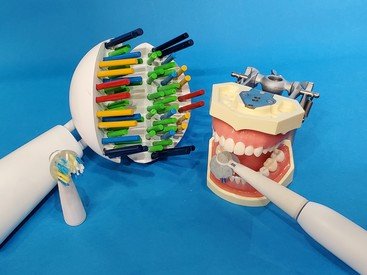Open Wide for the Revolutionary NJ Toothbrush
Clean and refresh your mouth for a new day!
It may come as a surprise to many to learn that three of the top 10 most common health conditions worldwide are closely related to bad oral hygiene. The number one spot on the authoritative report of Global Burden of Disease Study – which tracks diseases, conditions and injuries – is untreated tooth decay in adults. Number six is severe gum disease, also known as severe periodontitis, and number ten is untreated decay in children.
Professor Lijian Jin at the Faculty of Dentistry explained that severe periodontitis not only leads primarily to multiple tooth loss and edentulousness, it is also intimately linked to common life-threatening diseases such as diabetes, heart disease, some forms of cancer, and Alzheimer’s disease and dementia.
The two inventors were inspired by high-speed railways in their design of the new NJ toothbrush. Professor Jin explained that one of the problems with brushing teeth less effectively is the curved shape of the dental arches and gums; and therefore, they designed the brush to curve around bends and stay on track in the same way that high-speed trains do. “The toothbrush follows the curving line of front and back teeth, and it couples precisely over both upper and lower dental arches,” Professor Jin said. “The tracking does the work for you – it guides the toothbrush and yet the hinged head means you don’t even have to turn the toothbrush around to reach the other side of your mouth.”
The NJ toothbrush also specifically tackles the ‘dead corners’ – those hard-to-reach areas such as the space between teeth, sub-gumlines and the backs of retro molars which are often overlooked during brushing. Designed with precision computer mapping, the NJ toothbrush has six different types and shapes of purpose-built bristles curving around the tooth head, and each one aims at a particularly difficult-to-reach area. A unique design feature is the automatic expansion and contraction of the tooth head to make it fit closely around each tooth, regardless of size.
The HKU Technology Transfer Office has well handled and managed the patent issue. Hopefully, the NJ toothbrush could be available on the market in about 18 months.
“In the future, it will also be possible to customise the NJ toothbrush to individual needs and requirements,” Professor Jin added.


